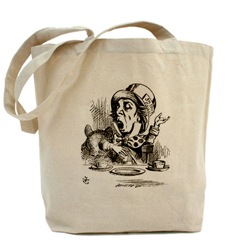
Mushroom poisoning, also known as mycetism, refers to deleterious effects from ingestion of toxic substances present in a mushroom. These symptoms can vary from slight gastrointestinal discomfort to death. The toxins present are secondary metabolites produced in specific biochemical pathways in the fungal cells. Mushroom poisoning is usually the result of ingestion of wild mushrooms after misidentification of a toxic mushroom as an edible species. The most common reason for this misidentification is close resemblance in terms of colour and general morphology of the toxic mushrooms species with edible species. Even very experienced wild mushroom gatherers are sometimes poisoned by eating toxic species, despite being well aware of the risks.
To prevent mushroom poisoning, mushroom gatherers need to be very intimately familiar with the mushrooms they intend to collect, including knowledge of the toxic species that look similar to these edible species. Other considerations regard methods of preparation and toxicity of some fungal species that appears to vary with geographic location, raising the potential of mushroom poisoning due to local toxicity of a correctly identified species.
What symptoms do poisonous mushrooms cause?
There are a variety of mushrooms, divided into categories or groups. Each category causes different symptoms.
Group 1. CYCLOPEPTIDES: The first signs and symptoms may not develop for six to 24 hours, usually 10-14 hours after the ingestion. Symptoms begin with sharp abdominal pains, followed by violent vomiting and persistent diarrhea, often containing blood and mucous. In three to four days, the patient begins to worsen with symptoms of kidney and liver failure. Death is very possible.
Group 1A. ORELLANINE: Symptoms begin 36 hours to 11 days after ingestion. They include nausea, lack of appetite, headache and, most importantly, a severe burning thirst and kidney failure.
Group 2. IBOTENIC ACID-MUSCIMOL: A state resembling alcohol intoxication develops 30 to 60 minutes after ingestion. Confusion, muscle spasms, delirium and visual disturbances, which last for about four hours, develop following the intoxicated state. Vomiting usually does not occur. Drowsiness and sleep follow and recovery is usually rapid.
Group 3. MONOMETHYLHYDRAZINE: After six to eight hours, the patient experiences a feeling of fullness in the stomach followed by vomiting and watery diarrhea. Headache, fatigue, cramps and intense pain in the liver and stomach regions occur, followed by jaundice. Seizures occur in severe cases.
Group 4. MUSCARINE-HISTAMINE: Within 30 minutes to two hours after ingestion, symptoms include sweating, drooling, diarrhea, watery eyes, blurred vision, pinpoint pupils, decreased heart rate and blood pressure, and asthmatic breathing. (The sweating, drooling, diarrhea and watery eyes do NOT occur with other types of mushroom poisonings.)
Group 5. COPRINE: Symptoms will occur if this mushroom is eaten by a person who drinks alcohol within the next 5 days. Flushing of the face and neck, a metallic taste in the mouth, numbness of the hands and feet, palpitations, and an increased heart rate are the symptoms.
Group 6. PSILOCYBIN-PSILOCYN: These are the hallucinogenic mushrooms that alter consciousness. An intoxicated or hallucinogenic condition begins between 30 and 60 minutes after ingestion. The mood may be apprehensive (anxious) or pleasant. The person may experience compulsive movements and uncontrolled laughter. In children, a high temperature (102-106½ F) with seizures may develop.
Group 7. GASTROINTESTINAL: Within 30 to 90 minutes of ingestion, sudden severe vomiting and mild to severe diarrhea with abdominal cramps occurs. Symptoms generally last six hours. In children, this may lead to dehydration severe enough to require hospital treatment.































